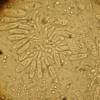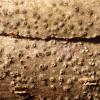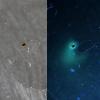
11-01-2026 20:35
Hello.A very tiny pyrenomycete sprouting sparsely

09-01-2026 17:41
Arnold BüschlenHallo, F. dilatata wird von vielen Bryoparasiten

10-01-2026 20:00
Tom SchrierHi all,We found picnidia on Protoparmeliopsis mur

07-01-2026 22:22
 Danny Newman
Danny Newman
Tatraea sp. on indet. hardwood The Swag, Great Sm

10-01-2026 01:18
 Danny Newman
Danny Newman
cf. Neovaginatispora fuckelii on indet. shrub Pre

07-01-2026 10:24
 Danny Newman
Danny Newman
Pezicula sp. on indet. hardwood Appalachian Highl

09-01-2026 10:08
 Blasco Rafael
Blasco Rafael
Hola, en el mismo habitat que la anteriorRetamaDia

08-01-2026 21:22
 Blasco Rafael
Blasco Rafael
Hola, He recogido esta muestra de Orbilia sobre Re

07-01-2026 17:29
 Marc Detollenaere
Marc Detollenaere
Dear Forum,On a barkless Populus I found some smal

10-11-2021 17:33
 Riet van Oosten
Riet van Oosten
Add-on topic http://www.ascofrance.com/forum/7059
Pyreno on Fraxinus excelsior.
Per Marstad,
16-03-2019 18:39
On the bark of Fraxinus, small, ca 1 mm.
Konidia 25 - 28 x 12 my.
It is nice with a name.
Per.
Chris Yeates,
16-03-2019 18:50

Re : Pyreno on Fraxinus excelsior.
Viktorie Halasu,
16-03-2019 21:20

Re : Pyreno on Fraxinus excelsior.
Dear Chris,
I'd like to ask, what's the difference between Macrophoma fraxini and Diplodia fraxini (or rather D. mutila, without brown conidia)?
Thank you in advance.
Viktorie
https://www.researchgate.net/publication/260591572_The_complex_of_Diplodia_species_associated_with_Fraxinus_and_some_other_woody_hosts_in_Italy_and_Portugal
I'd like to ask, what's the difference between Macrophoma fraxini and Diplodia fraxini (or rather D. mutila, without brown conidia)?
Thank you in advance.
Viktorie
https://www.researchgate.net/publication/260591572_The_complex_of_Diplodia_species_associated_with_Fraxinus_and_some_other_woody_hosts_in_Italy_and_Portugal
Chris Yeates,
16-03-2019 21:29

Re : Pyreno on Fraxinus excelsior.
They may represent the same thing as far as I know. "Coelomycetes" can be a taxonomic minefield, crying out for more molecular work.
Viktorie Halasu,
16-03-2019 21:39

Re : Pyreno on Fraxinus excelsior.
Yes, there's also a paper "Relationship of Macrophoma and Diplodia" (1904) by J.T.Emerson who obtained both types of conidia from a single pycnidium. That's why I was asking, to see if there's a molecular work on them.
By the way, my collections identified as Diplodia (fraxini or mutila, I'm still not sure how to distinguish them without dark brown conidia abundantly present) released a pigment into water or KOH mount, hyaline in visible light, but bluegreen in UV 365 nm. (The dark blue background is an artifact, I probably forgot to use UV filter.)
Correction: the UV+ water-soluble pigment it's actually not from the fungus, but from upper layer of Fraxinus bark. :-/ Sorry for not checking that before.
By the way, my collections identified as Diplodia (fraxini or mutila, I'm still not sure how to distinguish them without dark brown conidia abundantly present) released a pigment into water or KOH mount, hyaline in visible light, but bluegreen in UV 365 nm. (The dark blue background is an artifact, I probably forgot to use UV filter.)
Correction: the UV+ water-soluble pigment it's actually not from the fungus, but from upper layer of Fraxinus bark. :-/ Sorry for not checking that before.


